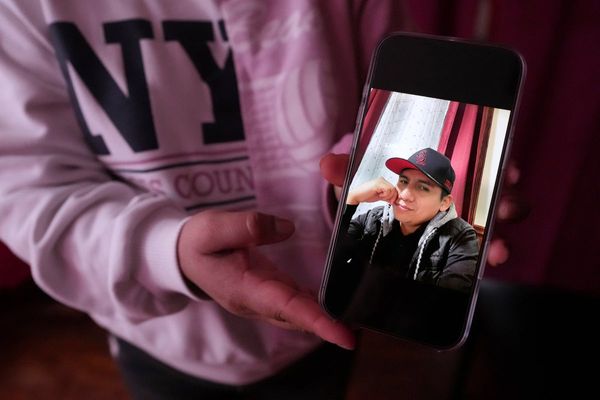MIAMI _ Federal transportation safety investigators are looking into cracks that appeared in a critical structural support piece in the Florida International University pedestrian bridge days before it collapsed, according to a preliminary report issued Wednesday.
The four-page report from the National Transportation Safety Board confirms that cracks on a diagonal truss support _ identified in plans as No. 11 _ raise concerns about the span's structural soundness. The cracks developed before the bridge was lifted into place on March 10. It collapsed five days later onto the busy Tamiami Trail, killing five motorists and a construction worker.
Independent engineers who have examined bridge plans released by FIU and the state have zeroed in on the No. 11 support at the span's north end as a potential key contributor to the collapse, saying it may have been poorly designed and not strong enough for the stresses it was meant to withstand. Some engineers consulted by the Miami Herald say the cracks may have been a telltale sign of serious structural problems.
The NTSB had sought to prevent evidence of those cracks from becoming public before it issued Wednesday's report, citing "investigative need." But FIU accidentally released photos of the cracks and an accompanying memo earlier this month in response to a Herald public records request.
According to the NTSB report, the cracks appeared on Feb. 24, while the 174-foot-long span was still by the Tamiami Trail, where it was built. The structure, the main portion of a still-unfinished bridge that was to open next year, was lifted into place onto two end pylons two weeks later in a matter of hours. The approach, called accelerated bridge construction, is meant to minimize the need to close the road to traffic.
Cracks also were found on a diagonal support on the south end of the bridge before the installation over the roadway, the NTSB noted. But the No. 11 support has drawn close scrutiny because the bridge failure appears to have started at the point where it connected to the pedestrian deck of the span.
Cracks were reported in the Florida International University bridge days before it was raised into the air above busy Tamiami Trail.
"While we still don't know the ultimate cause of the bridge collapse, it's reassuring that the NTSB is already laser-focused on the emergence of cracks on the structure," Sen. Bill Nelson said in a statement. "The victims' families and the public expect nothing less than a thorough examination of this tragic event to prevent it from ever happening again."
The agency report also said it's taking a broad look at "all aspects" of the bridge collapse, which has led to a police homicide investigation.
"The NTSB is evaluating the bridge design, the construction process, and the construction materials," the report said.
The NTSB report includes three photos of cracks at the bottom of the No. 11 truss support. It's the first time the photos have been intentionally released by investigators.
The agency has blocked release of public records dated Feb. 20 and after because of its ongoing investigation.
But FIU mistakenly released the photos and an accompanying Feb. 28 memo by a consulting engineer raising questions about the cracks.
The Herald is suing the Florida Department of Transportation to force the release of records from after Feb. 19, including notes from a crucial meeting held the morning of the bridge's collapse to discuss the cracks. FDOT has said the federal order prevents it from obeying Florida's broad public records law.
A spokesman for NTSB said the agency is keeping the public records block in place.
"The case remains under investigation, so the constraints on the public release of materials relative to the investigation remain in place," Christopher O'Neil wrote in an email.
That means key questions _ including how engineers working on the project evaluated the cracks and what steps they took to evaluate them _ remain unanswered.
The NTSB report also answers two questions that outside engineers say could be key in identifying the cause of the bridge collapse.
Crews working atop the bridge canopy when it fell to the roadway were tightening steel support rods that run inside the No. 11 truss member, the NTSB said. That appears to at least partly confirm an early tweet by Sen. Marco Rubio, who said crews were tightening tension to close cracks in the bridge.
The NTSB does not specify whether the tightening was being done to address cracking, however. Outside engineers have said tightening the support rods may have inadvertently added enough stress to the already compromised No. 11 diagonal to cause it to shatter, sending the entire span into catastrophic failure while traffic continued to flow under it.
The NTSB report also confirms that crews had, as planned, loosened the support rods in No. 11 and No. 2 after the bridge was installed on March 10. The rods were meant to provide temporary support to the bridge ends as the span was lifted into place by two special transporters. Once the bridge ends were resting on support pylons, that extra tension was no longer necessary, engineers say.
The bridge's engineer of record, W. Denney Pate, of FIGG Bridge Group, called an FDOT official two days before the collapse to report that cracking had appeared on the bridge, records released by the agency show. Pate said the cracks did not present a safety hazard.
The NTSB report says investigators will conduct additional forensic testing of bridge structural components removed from the site. The agency has said a final report could take as long as a year.
"All aspects of the collapse remain under investigation while the NTSB determines the probable cause, with the intent of issuing safety recommendations to prevent similar events," the report says.
Thirteen government institutions and private companies are participating in the NTSB's investigation, according to the report. They include the Federal Highway Administration, the Miami-Dade Police Department, FIU and Munilla Construction Management and FIGG Bridge Engineers, the firms that designed and built the bridge.







